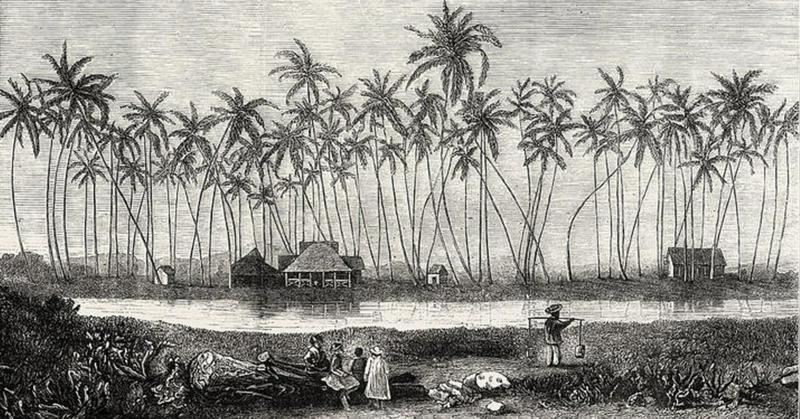The Hawaiian Gazette: The First Hawaiian Newspaper Published
By | August 29, 2021

On September 4, 1866, the first newspaper on the Hawaiian Islands began publishing. For the next 53 years, the Hawaiian Gazette reported all the news that was fit to print, at least as far as it concerned American interests in the islands.
Hawaii In The 1860s
Even though Hawaii did not officially become a U.S. state until 1959, this collection of islands in the Pacific saw a lot of American activity in the 1860s and beyond. After American growers discovered its rich, fertile soil was ideal for cultivating sugar, cotton, and other important crops, they built sprawling plantations across the islands that exported millions of pounds of sugar. Hawaiian news events—such as the goings-on of the Hawaiian royal family and the recently developed leper colony on Moloka'i—meant major changes for these big businesses, but at the time, there was no way to communicate information to the whole American-Hawaiian enterprise. They were just kind of flying blind until something came along and ruined their crops or tanked their prices.

The Hawaiian Gazette
To keep folks abreast of the happenings, Hawaii's first newspaper, the Hawaiian Gazette, printed its inaugural issue on September 4, 1866. In addition to the general news of the day, the Hawaiian Gazette functioned primarily to support Hawaii's sugar industry. They published weekly shipping schedules, sugar export figures, and export statistics for other products and goods, while providing an advertisement platform for various sugar and sugar-related companies.
In fact, the Hawaiian Gazette's relationship with the sugar industry was a chief factor in its political coverage, especially when it came to the Hawaiian monarchy. Four monarchs came and went over the course of the newspaper's life, and as long as their sticky-sweet interests aligned, the Gazette regarded them favorably. Beginning in 1873, however, during the reign of King Kalākaua, the Gazette became decidedly anti-monarch, bashing the new king for his lavish coronation and even condemning some of the traditional Hawaiian customs associated with the celebration, including traditional Hawaiian dances, chanting, and hula hooping.
Suddenly, the Hawaiian Gazette became a major driver of the growing pro-annexation movement in Hawaii, calling for the establishment of a new government structure in the region. This came to pass in 1887, when the new Bayonet Constitution stripped the monarchy of all its power, turning them into figureheads. With the government now controlled by foreign interests, the Hawaiian Gazette returned to favorable coverage of the government.

The Gazette's Downfall
Soon enough, the Hawaiian Gazette earned criticism for its biased coverage, which included glowing endorsements of the region's business tycoons but staunch opposition to Queen Lili'uokalani. They refused to publish her letter of protest against what she called the overthrowing of the Hawaiian monarchy, labeled her a "counterrevolutionary," and claimed she was illegally attempting to reclaim the throne, all while insisting they were the only publication to present the "true and extended account" of the events. There might have been a reason they resorted to such sensationalist coverage: By 1918, having lost the struggle to stay relevant as rival newspapers burst onto the scene, the Hawaiian Gazette had printed its final edition.

